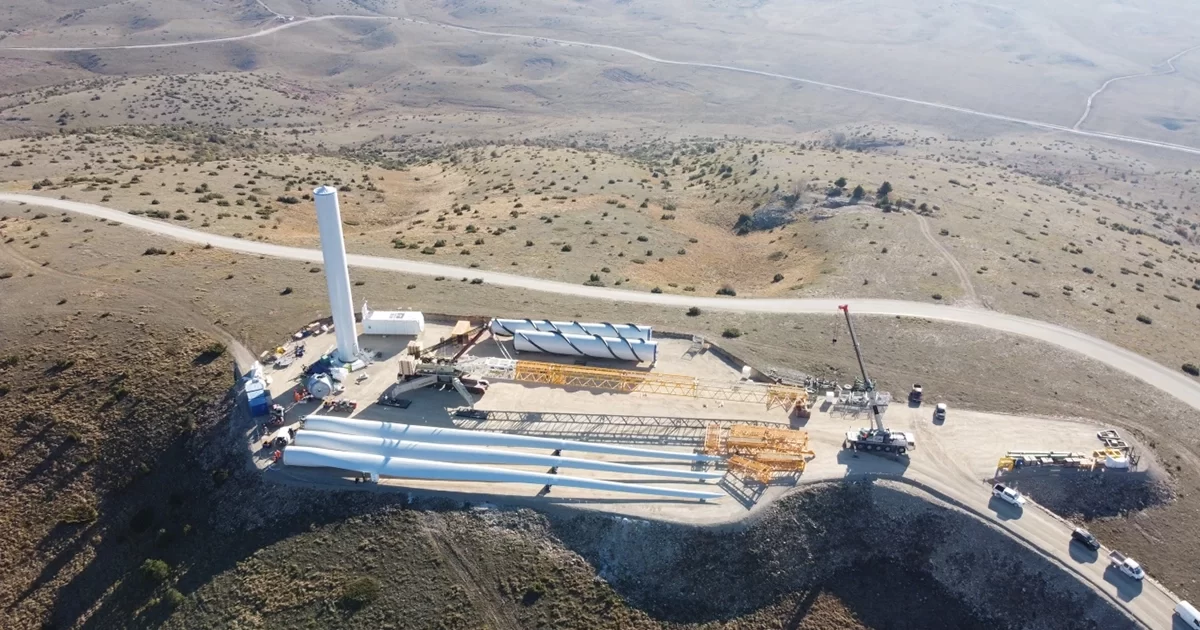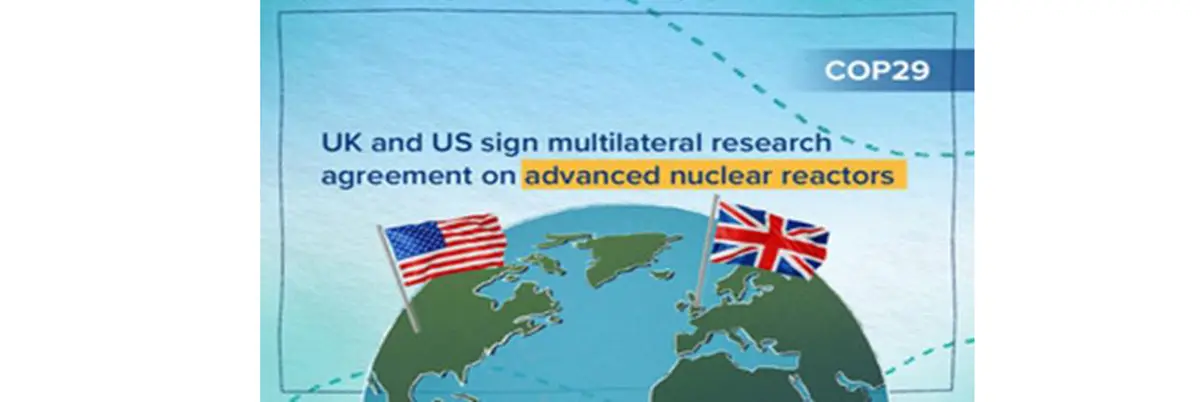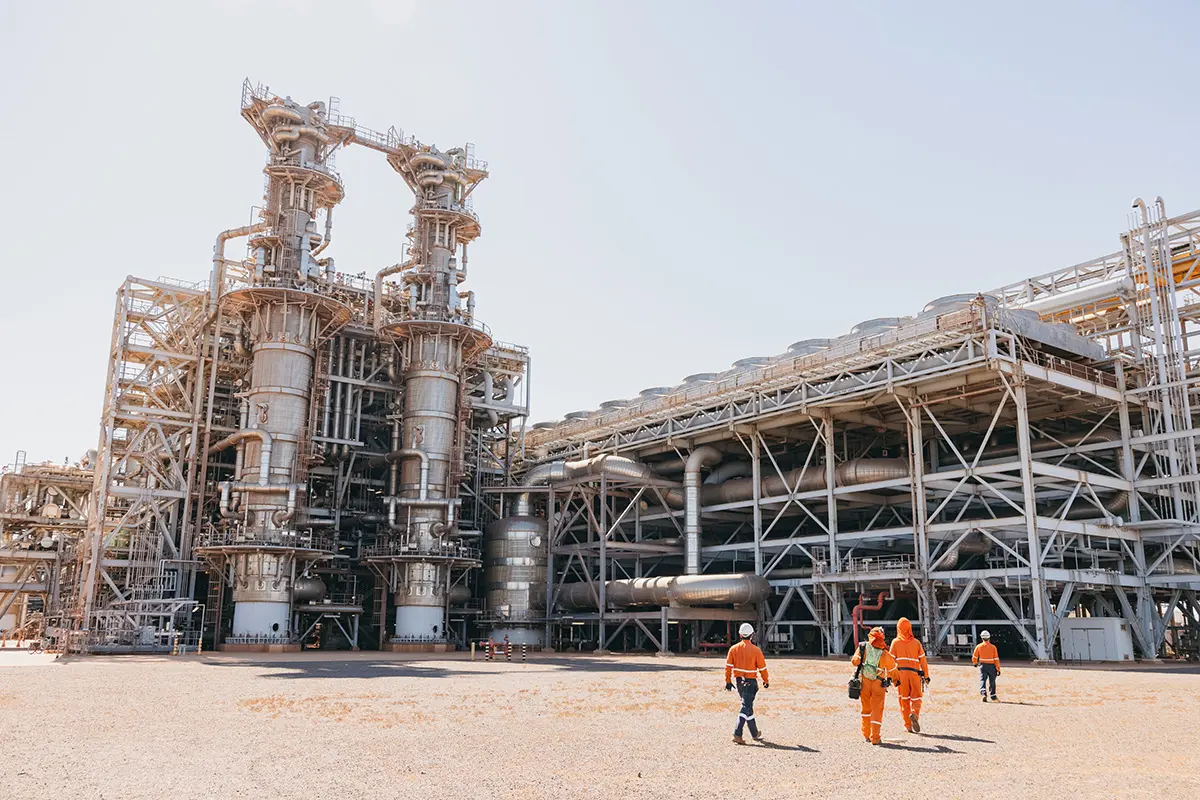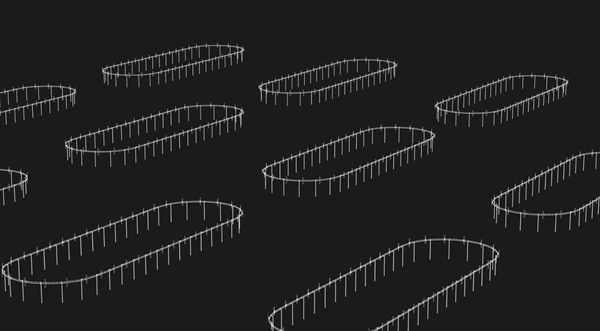
Bringing The Heat
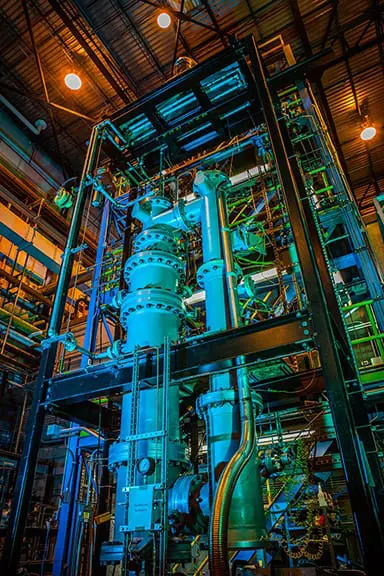
The US Department of Energy’s (DOE) Office of Fossil Energy and Carbon Management (FECM) has committed US$8.8 million toward 11 university-based research and development projects to improve the performance of hydrogen-fueled turbines. The selected projects will develop advanced materials and components that can better manage and withstand the extreme environment generated during hydrogen combustion to enable the use of up to 100% clean hydrogen in gas turbines for low-carbon power generation.
“Advancing hydrogen turbine performance is critical to increasing the use of low-carbon fuels like clean hydrogen to help achieve our climate goals,” said Brad Crabtree, assistant secretary of fossil energy and carbon management. “We are investing in cost-shared, cutting-edge research at US universities that will help make clean hydrogen more affordable and widely utilized, while also expanding the hydrogen workforce.”
The DOE’s National Energy Technology Laboratory, under the purview of FECM, will manage the selected projects.
Since January 2021, FECM has committed an estimated US$147 million in projects that explore new, clean methods to produce hydrogen and to improve the performance of hydrogen-fueled turbines. These projects support DOE’s Hydrogen Shot initiative, which seeks to reduce the cost of clean hydrogen by 80% to US$1 per 1 kilogram in one decade to develop and commercialize new, clean hydrogen pathways in the United States (see “Seven For Seven,” December 2023 Gas Compression Magazine, p. 34) (see “Fahrenheit 2.7: US$7 Billion For Seven Regional Hydrogen Hubs,” Q1 2024 ESG Review, p. 2).

Arizona State University (Tempe, Arizona)
DOE Funding: US$800,000
Non-DOE Funding: US$200,002
Total Value: US$1,000,002
Arizona Board of Regents, on behalf of Arizona State University, will partner with RTX Technology Research Center to develop a high-fidelity computationally driven and experimentally validated framework to investigate the performance and life of environmental barrier coatings (EBCs) and EBC-coated ceramic matrix composites (CMCs) in hot gas path (HGP) hydrogen fueled turbine systems. The multidisciplinary research will integrate advances in material modeling, mechanics, deep learning, and scale-dependent characterization and testing to close the knowledge gap that exists in modeling the nonlinear temporospatial deformation, property degradation, and failure mechanisms that govern the response of CMC components under the combined effects of high temperature, high moisture, and thermomechanical load.
Clemson University (Clemson, South Carolina)
DOE Funding: US$800,000
Non-DOE Funding: US$200,000
Total Value: US$1,000,000
Clemson University intends to perform fundamental research develop and validate advanced metallic bond coat materials to improve the performance of thermal barrier coatings (TBCs) for HGP components in hydrogen turbines. The specific project objectives are to: (1) design new bond coat materials of high entropy alloys and functionally graded materials with improved oxidation resistance, oxide volatilization resistance, high-temperature mechanical properties and thermal stability; (2) manufacture bond coats and TBCs to achieve the desired composition gradation along the depth of the coating, desired uniformity across the coating surface, and mechanical properties using laser-directed energy deposition and air plasma spray; (3) test and validate bond coats and TBCs in a laboratory test chamber with controlled temperatures and gases/steam compositions and in an industrial burner rig chamber capable of steam additions; (4) accelerate material development and technology transition based on the data generated by the high-throughput manufacturing and testing by developing, training, and validating a data-driven enabled generative adversarial network-based deep learning model that has both prediction and generation capability.
Colorado State University (Fort Collins, Colorado)
DOE Funding: US$800,000
Non-DOE Funding: US$200,000
Total Value: US$1,000,000
Colorado State University (CSU) will conduct an experimental-computational integrated project to develop novel ceramic materials and improve capabilities for HGP components in gas turbines using hydrogen containing fuels. CSU will use advanced processing methods that combine field-assisted sintering technology and laser additive manufacturing. This project will address the effects that hydrogen fuels may have on the performance of the materials, including higher flame temperature, high flame speed that leads to flashback, higher production of nitrogen oxides, and water vapor, and will methodically generate material performance data and experience to fill in the fundamental knowledge gap. Specifically, the goal is to identify suitable chemical composition and microstructure of a CMC material that can withstand higher temperatures, allowing turbine inlet temperatures exceeding 3100°F (~ 2000K), in the exhaust gas fluid environment resulting from the combustion of hydrogen and natural gas blend.
Pennsylvania State University (University Park, Pennsylvania)
DOE Funding: US$800,000
Non-DOE Funding: US$200,000
Total Value: US$1,000,000
Pennsylvania State University will test the implementation of CMCs in gas turbine hot-section components to facilitate significant increases in the maximum cycle temperature available with hydrogen combustion, which would result in higher cycle efficiency. The project will test several different methods of manufacturing CMCs with EBCs for combustion liners with effusion cooling. The specimens will be tested in a realistic combustion environment at a range of fuel compositions, from 100% natural gas to 100% methane. The project will use high-speed mid-wave infrared imaging to measure the impact of the manufacturing method on the heat transfer to the part, as well as the efficacy of the effusion cooling features. Objectives of this work include using an innovative method of manufacturing EBC-coated CMCs—Field-Assisted Sintering Technology—to understand the potential of creating components with a variety of cooling features; testing these new components using a newly developed combustion facility for testing ceramic components in high-hydrogen flame environments; and working with industry partner GE Aerospace Research to improve outcomes of the research. Knowledge gained from accomplishing these objectives will then be applied to potential industry applications and broaden participation of historically underrepresented groups by providing high-quality research and education experiences to both undergraduate and graduate students.
Purdue University (West Lafayette, Indiana)
DOE Funding: US$799,239
Non-DOE Funding: US$349,815
Total Value: US$1,149,054
Purdue University intends to address the challenges posed by rotating detonation combustion’s (RDC’s) harsh environment, with large and unsteady pressure and temperature gradients that threaten the structural integrity of conventional combustors and turbines. The project is broken down into two primary objectives. The first objective focuses on developing material selection characterization tools to identify materials resilient to the unique stresses of RDC in gas turbines. This involves a dual experimental and computational analysis approach to understand the effects on TBCs and other materials under RDC conditions. The second objective is to develop advanced thermal management tools, including fluid-thermal-structural analysis. The team will use high-precision sensors and sophisticated finite element simulations to accurately characterize fluid and thermal boundary layers within RDC environments. A vital part of this project is integrating and demonstrating the RDC combustor-transition element and nozzle guide vane within the Rolls-Royce M250 engine. This involves operating the M250 over several hours to validate the safe operation of rotating blades under RDC conditions.
Texas A&M Engineering Experiment Station (College Station, Texas)
DOE Funding: US$799,760
Non-DOE Funding: US$199,940
Total Value: US$999,700
Texas A&M Engineering Experiment Station plans to establish, understand, and quantify life-limiting mechanisms by which both conventional and new HGP materials degrade under hydrogen-fired (vs. natural gas-fired) conditions, paying special attention to the higher water vapor content of the combustion gas, combined with high local heat and mass transfer. The project will evaluate both a TBC-coated nickel-based superalloy and a new alloy-coating system under turbine-simulative conditions, directly comparing hydrogen and natural gas fuels under very high heat and mass transfer conditions. The new materials system comprises a refractory high entropy alloys (RHEA) substrate developed under the DOE Advanced Research Projects Agency-Energy’s Ultrahigh Temperature Impervious Materials Advancing Turbine Efficiency program, with a tailored bond coating to suppress substrate oxidation and retain a new thermal/environmental barrier coating. Using data from severity-accelerated endurance testing under hydrogen and natural gas fuels, the project will employ kinetic scaling models to assess the long-term durability of HGP materials systems under turbine operation. Using multi-objective optimization, the project will identify the most suitable RHEA-coating systems for hydrogen-fueled power turbine applications.
University of California (Davis, California)
DOE Funding: US$799,999
Non-DOE Funding: US$215,440
Total Value: US$1,015,439
Regents of the University of California plan to develop refractory high entropy alloys (RHEAs) toward high creep strength (10-8 s-1 creep rate under 200 MPa) up to 1300 ℃ and room temperature tensile ductility, along with thermally compatible entropy stabilized oxide coatings (by minimization of the coefficient of thermal expansion between metal and coating) to provide oxidation/corrosion resistance. The careful design of RHEAs within a vast compositional space is paramount to accomplishing these objectives. A recently designed candidate with severe lattice distortion, NbTaTiV, shows a good combination of high-temperature strength (above 600 MPa up to 900 ºC) and room temperature tensile ductility. The promises of this composition are extended by the fact that the material does not contain highly expensive elements (such as hydrogen fluoride, rhenium, and ruthenium that are often added to refractory alloys) for feasible upscaling and commercialization.
University of Central Florida (Orlando, Florida)
DOE Funding: US$802,898
Non-DOE Funding: US$197,102
Total Value: US$1,000,000
The University of Central Florida intends to explore a new CMC material—3D Fi-BarTM carbon fiber reinforced multi-refractory polymer-derived carbide CMC—for hydrogen rotating detonation engines (RDEs). The proposed project will involve detailed materials qualification through fiber and matrix material development, CMC manufacturing techniques, RDE testing, CMC modeling, and fabrication of the CMC combustion liner of hydrogen RDEs for demonstration and testing. If successful, the CMC material can open a new design toolbox for RDEs. This work will provide critical knowledge regarding CMC materials design and manufacturing for hydrogen-based RDE components such as the CMC combustor liner. The project is expected to accelerate qualification and certification of the CMC material toward RDE applications. It will also benefit the diversity, equity, inclusion, and accessibility program and the workforce development program in advanced manufacturing and clean energy at the University of Central Florida.
University of Michigan (Ann Arbor, Michigan)
DOE Funding: US$800,000
Non-DOE Funding: US$200,000
Total Value: US$1,000,000
Regents of the University of Michigan plan to address the fundamental knowledge gaps surrounding material performance in the HGP of RDC/turbine-integrated systems using hydrogen fuels for power generation applications. The project team plans to (1) identify promising candidate materials for application to RDC/turbine-integrated systems and quantify the material requirements for three RDC/turbine hot-gas-flow-path configurations (flow glancing on a surface, flow glancing on a perforated surface, and flow interaction with a blunt object); (2) develop a small-scale, long duration RDE testbed with characterized, repeatable operational conditions that can be used for rigorous materials testing; and (3) evaluate the response of candidate materials in the RDE testbed and correlate the material response to RDC operational conditions to facilitate the development of performance and life prediction methodologies and pathways to improve long-duration material survivability in RDC/turbine integrated systems. The project will address these objectives through a comprehensive investigation of RDC performance and material response.
University of Minnesota (Minneapolis, Minnesota)
DOE Funding: US$800,000
Non-DOE Funding: US$200,000
Total Value: US$1,000,000
Regents of the University of Minnesota intend to strengthen the understanding of how material temperature, steam concentration in combustion gas, and the nature of corrosive deposits impact component durability. The major project objectives are to (1) develop a new understanding of alloy oxidation and corrosion under hydrogen-fueled turbine conditions using computational thermodynamics modeling and coupon-scale oxidation and corrosion testing, which could lead to a new understanding of the predominant hot corrosion mechanisms relevant for higher-T, hydrogen-fueled turbine operation; (2) formulate new alloys for improved corrosion performance by identifying the critical factors influencing alloy and coating performance identified in the initial stages of this research, which will be used to formulate new bond coat alloys expected to mitigate specific hot corrosion mechanisms, expand the design window for future turbine architectures, and enable component upgrades for improved performance and durability in existing turbines; (3) develop predictive models for future alloy design and life prediction that could be refined to build an improved capability to predict material performance as a function of changes in the operational environment including temperature, the constitution of corrosive species, and the hydrogen content in the fuel; and (4) develop a more diverse and capable technical workforce.
University of New Mexico (Albuquerque, New Mexico)
DOE Funding: US$800,000
Non-DOE Funding: US$200,000
Total Value: US$1,000,000
The University of New Mexico plans to construct and utilize a special-purpose hydrogen RDE as a materials testbed. This project contains highly coupled experimental and modeling efforts. In parallel to the design, construction, and testing of an RDE, the project will undertake thermo-mechanical modeling to guide the initial materials selection for testing and evaluation. The models will be used to identify promising coating materials and thicknesses for evaluation in the RDE testbed at different conditions. The project will evaluate tested materials for their behavior before and after the engine test. Finally, the project will develop in-house materials library to train a machine learning model. Anticipated benefits include fundamental materials development for hydrogen RDEs to evaluate and/or mitigate thermal and mechanical stresses associated with the operation of hydrogen fueled RDEs for the purpose of land-based power generation. The project will address and resolve fundamental scientific challenges and applied engineering technology issues associated with producing knowledge, data, and understanding of the risk associated with material fatigue and thermal/mechanical stresses in RDEs operating on hydrogen fuels and strategies for minimizing the risk through material selection and design improvements that would maintain any achieved performance benefits.


